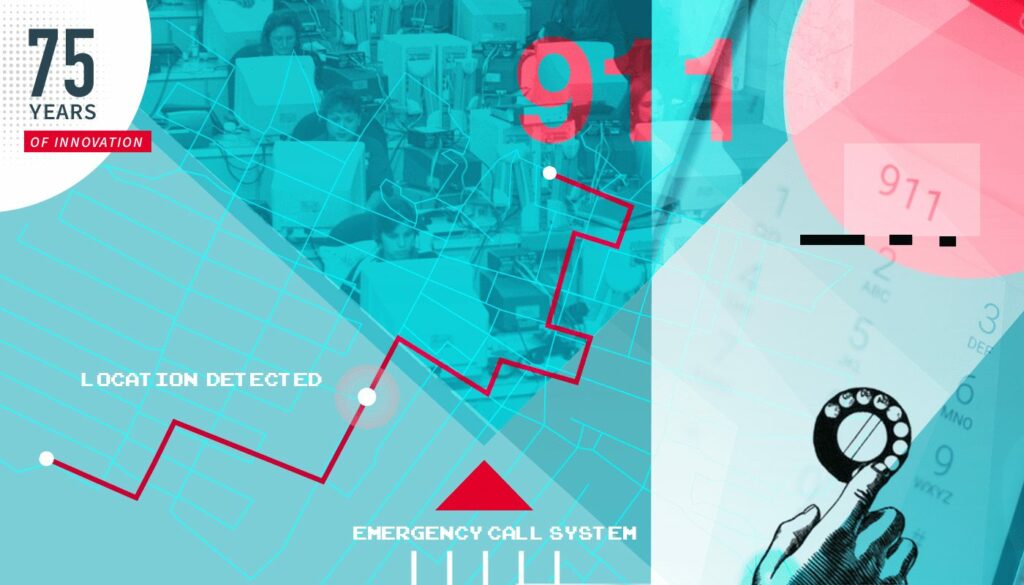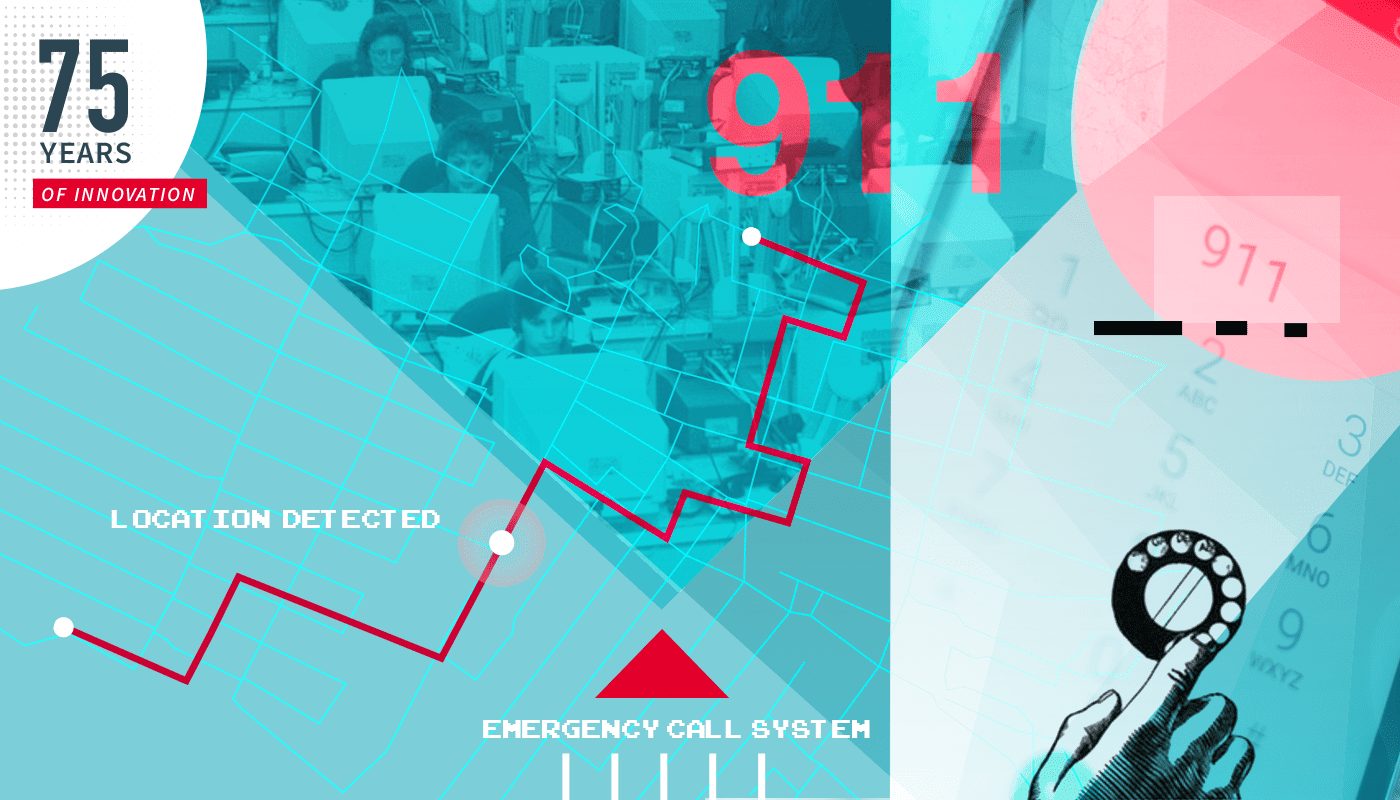The 75 Years of Innovation series highlights the groundbreaking innovations spanning from SRI’s founding in 1946 to today. Each week, SRI will release an innovation, leading up to its 75th anniversary in November 2021.

Delivery of a robust emergency response system model that considered all moving parts, including technology, delivery and cost
Dialing 911: How SRI helped build the nation’s first-responder communication infrastructure
The 911 emergency call system has saved countless lives. This system is part of the U.S. emergency response and disaster preparedness service. Each year, 240 million emergency calls are made to 911. While based on such a simple idea — call one number for all emergencies — developing such a system was challenging. Behind the 911 call system lies the expertise of SRI International.
One size fits all: Design and costing of a 911 system
In the 1950s, the National Association of Fire Chiefs requested a central number for reporting fires. In 1958, the first 911 emergency call was made in Alabama. A decade later, the President’s Commission on Law Enforcement and Administration of Justice, seeking reduced emergency response times, recommended that “the telephone company should develop a single police number for each metropolitan area, and eventually for the entire United States.”
Fundamentally, such a centralized approach needed to be highly interoperable, not just from a technical point of view, but as a holistic system, a one-size-fits-all approach to emergency response. In 1968, AT&T made the 911 number available, and local governments across the U.S. began using it for emergency calls. 911 was an ideal number for this; it was easy to remember, quick to dial and previously unused.
Designing a system with such a wide-scope was challenging. This was further complicated by the fact that the system needed to facilitate interaction between safety agencies, political jurisdictions and telephone company service areas. A simple phone number did not translate into a simple back-end system to manage the output from a centralized emergency number. SRI International recognized that creating a nationwide central phone number that connects callers with local emergency services would be quite tricky and require many interacting parts.
The technical manual The Design and Costing of 911 Systems was initially published in 1979, resulting from a contract awarded to SRI International by the Law Enforcement Assistance Administration (LEAA). This manual is an in-depth design document that presents a process for federal, state and local authorities to create a universal emergency telephone number (911) service. The manual outlines four basic tenets of such a service:
- Tenet one: Technical characteristics
Describes the equipment and facilities needed for the communications systems. - Tenet two: Operational characteristics
Explains the processing of incoming calls, dispatch and the integration of information systems. - Tenet three: Managerial characteristics
Describes the management and agreements that control the technical, operational, and budgetary facets of the system. - Tenet four: Fiscal characteristics
Examines the cost of planning, implementing and operating the system.
Each chapter of the manual deals with specific aspects of designing and developing the 911 emergency call service. Chapters cover:
- Designing the technical and operational components of the service
- Setting up selective routing for a 911 service
- Determining a cost estimate for the service
- Non-technical considerations, including alternatives for system management and costing, and public and staff training
The thought and detail that went into the manual led to a robust emergency system that worked successfully across the entire United States. Essential aspects of the system include:
Operational methods: Including ‘Direct Dispatch’ and ‘Call Transfer.’ The manual’s detailed description of the process for both methods helped establish best practices and optimize response time. Operational methods also include ‘what to do if’ — something essential in a mass-adopted service with many possible outcomes. The manual presents mathematical models, but it is challenging to predict call volumes when natural events such as storms or earthquakes cause a surge in emergency calls. Nevertheless, the manual offers a mapping of assumptions and provides The Approximation Method’ to estimate call volumes.
Joint powers agreement: This is an inter-governmental mechanism used as a means of neutral control. This agreement helps diffuse political volatility and provides an unbiased process for funding.
The here, now and future of 911
In 2018, the NG911 NOW coalition presented a report to Congress on the next generation 911 (NG911) service. This comprehensive report considered the role of evolving technology in the context of the 911 emergency call system. It emphasized the need to provide new forms of data, such as photos and streaming video, to assist first responders. As the 911 system continues to evolve, the earlier tenets set out by SRI International continue to set the standard for delivery of an emergency response system.
A sign of a strong and coherent society is how it helps those in need. A centralized emergency response system is part of this coherence. The 911 emergency call system provides a fast way to get help, and the peace of mind that comes from knowing help is only a phone call away.
Resources
ABC News Toddler, 3, makes life-saving 911 call after mother collapses: https://abcnews.go.com/US/toddler-makes-life-saving-911-call-mother-collapses/story?id=55614796
President’s Commission on Law Enforcement and Administration of Justice, The Challenge of Crime in a Free Society, February 1967
T.J. Jung and T.I. Dayharsh, The Design and Costings of a 911 System — Technical Manual, US Department of Justice, September 1980, SRI Project 7543 Task 4.1 (Revised)



